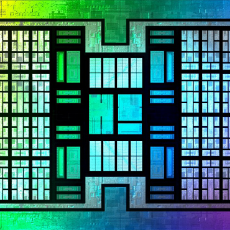
Geneslaw
Member-
Posts
22 -
Joined
-
Last visited
Awards
This user doesn't have any awards
Recent Profile Visitors
462 profile views
Geneslaw's Achievements
-
I did find two black screws when I tried earlier. One side got loose, but the other side was still stuck. But maybe there was one of those tabs as well? What would I be looking for?
-
Hmm, maybe I should give it another try then. The IO shroud seemed to be stuck under the heatsink, though. I did try to remove it earlier, but it was quite stuck. Not sure how this person removed it without removing the heatsink.
-
Not entirely. Part of it is not a shroud but a heatsink.
-
I bought a Scythe Fuma 2B for my i5 13600KF and ASUS ROG Strix B660-I Gaming WiFi. Unfortunately, the cooler barely doesn't fit. The cooler is just a little too asymmetrical to fit. It's a small difference, but just enough to matter. The cooling pipes hit the IO shroud, which is also partially a heat sink. This pushes the cooler back by only a few millimeters, just enough that the screws of the cooling tower are next to the screw holes of the bracket. I'd say about 3 millimeters. If I rotate the cooler 180 degrees, it will hit the RAM. If I rotate it 90 degrees so it blows up instead of to the back, it hits both the heatsink and the RAM. The distance between my RAM and the heatsink is about 9.9cm, and the socket is in the middle, give or take a few millimeters at most. The IO cover is just under 4.5cm. The case is a Coolermaster NR200, which gives the cooler a maximum height of 155mm. I was wondering if someone knows anything that could fit.
-
I haven't seen any of those around in the first place so far. They don't appear to be sold around here yet. And they sound like they'd be more expensive than B660 so I'd have to say how much that would be worth it. Although I've looked into DDR4 B660 boards some more since posting this, and a lot of them are quite shit. The ASRock ones have power limits and stuff. Some others have other weird choices. A Z790 ITX board might be an option if it's somehow cheap enough and if it supports DDR4. But if it's too expensive I might as well go with B660+DDR5. Getting both expensive Z790 and DDR5 sounds like it would REALLY stretch my budget.
-
Budget (including currency): €700 (stretchable, but I'd prefer not to dip into my reserves unless there's a compelling reason) Country: Netherlands Games, programs or workloads that it will be used for: Mostly gaming. Some CAD (Onshape). Occasional software compilation. Maybe PS3 emulation. Games can vary, whatever catches my fancy. I'll probably start Cyberpunk 2077 one of these days. I'll definitely play Spider-Man Miles Morales. DotA2 as well. People are trying to convince me to try Overwatch 2. Cities Skylines. If it's good I may play it. I'm a little less inclined towards shooters, though if they're good I might give them a try. Other details My current system is as follows: Core i7 7700K Corsair Vengeance LPX CMK32GX4M2D3600C18 Rx 6900XT MSI Z270I Gaming Pro Carbon AC Cooler Master NR200 You can probably tell that a 7700K and a 6900XT make for a very lop-sided combination. And yes, there have been games such as DotA2 in which my framerate hasn't changed a bit after I got the Rx6900XT. In my defence, it only cost me 400 euros. But when you have a 144Hz Freesync/180Hz no Freesync monitor (1440P), you'd like some performance of at least 144Hz in lighter games like Dota. And having a CPU that matches very high specs in Spider-Man Miles Morales would also be nice, when I have a GPU that already matches that. My choice of RAM is also a little weird, but I guess I decided slow RAM wasn't much cheaper anyway at the time, so I just went with 3600. I've been thinking of upgrading earlier this week, almost decided to bite the bullet, and only yesterday found out that 13th gen was even coming. Earlier, I was thinking of upgrading to a 12400F. Now I'm thinking of upgrading to a 13600KF. Nothing against AMD either, though Intel seems very compelling right now. I'm mostly considering these two options DDR4 build: Intel Core i5-13600KF € 369,99 ASRock B660M-ITX/ac € 150,21 Scythe Fuma 2 Rev. B € 66,89 Corsair Vengeance LPX CMK32GX4M2D3600C18 €0, already got it Price including shipping: ~595 DDR5 build: Intel Core i5-13600KF € 369,99 ASUS ROG Strix B660-I Gaming WiFi € 217,60 Scythe Fuma 2 Rev. B € 66,89 Corsair Vengeance CMK32GX5M2B5600C36 € 189 Sale of current RAM: €60+ off Price including shipping: ~800 Current concerns with the DDR4 build: no DDR5, so I might be leaving performance on the table. Although the LTT review as well as a few others seem to imply that it's a tiny difference. Motherboard BIOS may need to be updated and I'm not sure if I can do that without a fitting CPU, I might have to pay 15 or 20 euros extra to have a store update it if they don't have a recent unit, there is one that offers that service. And I've heard some rumblings about the VRMs of the ASRock board not being good enough for that CPU. It needs to be an ITX board though, and there are few ITX socket 1700 boards available. DDR5 build would address most of those concerns. Asus ROG can be updated without a CPU present. DDR5 so no concerns there either. Not sure if the VRMs are good enough or not. But I'm really stretching my budget here. I'm already counting on the sale of my current motherboard, CPU, and cooler as part of my budget. 12400F or AMD could also be options, but the 13600KF does seem compelling.
-
In my experience, this type of RAM mixing usually works just fine. There is a chance of it not working though, but in my experience it usually does. It's not ideal though, and I do recommend getting matching sticks if you can. But hey, if you just have a stick lying around anyway, you can try. Your faster stick will run at the speed of the slowest one, and dual channel will be weird. Your memory controller might even run the first 8GB of that 16GB module in dual channel mode (or at least, simulate dual channel mode), which would be nice if you get it to actually do so. Do make sure your modules are designed to run at the same voltage though. This will easily be your biggest potential issue. You don't want a stick that is specced for 1.35V to run at 1.2V, which will most likely make it refuse to cooperate altogether. Even worse would be putting a higher voltage on a module that isn't designed for higher voltages, that might completely break the module forever. Even if a module can tolerate a range of voltages, this might not be idea. I've mixed different voltages on DDR3 before. Now this is different from DDR4 of course, which is what you're using, and I don't know if DDR4 has some features to make mixing RAM that's specced for different voltages easier. However, when I did it, it was tricky to get it working. My lower module could operate at both 1.35V and 1.5V according to the manual, while the other module only tolerated 1.5V. My motherboard would strongly prefer to operate both on 1.35V, causing the 1.5V module to refuse working. I had to do a weird RAM dance, pulling modules in and out and switching them around, to get the motherboard to operate the modules at 1.5V. Once I got the motherboard to do that, it worked well. Mixing different speeds or different capacities is something I've done a lot by now. It always worked for me. Mixing different voltages is also something I've done, and while I've gotten that to work too, DON'T do it.
-
DepotDownloader is just a terminal program. On Windows, you have to open your command prompt and then run your commands. Something like "dotnet DepotDownloader.dll" followed by parameters. I installed it from the Arch repo on my system, so my command is slightly different from Windows, but it's the same concept. Something like "depotdownloader -app 1151640 -depot 1151641 -manifest 8564283306590138028 -username [your username]". If you're on Windows, you'll use "dotnet DepotDownloader.dll" insteal of "depotdownloader". For more info on the depot IDs and manifest IDs for Horizon Zero Dawn, there is this link: https://steamdb.info/app/1151640/depots/ However, it seems to just be downloading the latest version of the files listed in that particular manifest. Meaning it's the 1.11 version of those files. I can't get it to download older versions. It seems that the manifests themselves just point to some file names, but not to a specific version of those files. I don't see anyway to get a different version. Unless @Mark Kaineknows of a way to do it, I don't see how. So yeah, I'm also stuck on 1.11, even though I didn't have any problems getting DepotDownloader to work. It's a shame. 1.11 completely borked foliage for me. Makes it feel like my eyes are being pulled out of their sockets. And I'm certainly not the only one complaining about it.
-
6:54 My Eneco Toon is a smart thermostat that uses OpenTherm to run over two wires. I think it can also do on/off, but you really want OpenTherm. Does both power and communication over just the two wires.
-
I just got a single GPU passthrough thing working on my Manjaro system (7700K, 1080ti, Z270I Gaming Pro Carbon AC), but I’m not getting any sound. I have already enabled linger, and I set nographics_allow_host_audio to 1 in /etc/libvirt/qemu.conf. When I run a normal VM without passthrough, qemu is running is my own user, as is virt-manager, as is pulseaudio. I’ve also tried adding the following to my xml, but it doesn’t solve anything: <qemu:commandline> <qemu:arg value='-device'/> <qemu:arg value='ich9-intel-hda,bus=pcie.0,addr=0x1b'/> <qemu:arg value='-device'/> <qemu:arg value='hda-micro,audiodev=hda'/> <qemu:arg value='-audiodev'/> <qemu:arg value='pa,id=hda,server=unix:/run/user/1000/pulse/native'/> </qemu:commandline> So, anyone got an idea on how to get sound working? Preferably both microphone and audio out.
-
- virtual machines
- gpu passthrough
-
(and 3 more)
Tagged with:
-
I've tried a completely different board after the second repair. Completely different generation. Others have confirmed the card itself was damaged. I've always used the cables that came with my PSU. No extension. Never head a pop.
-
So I've had two cards die on me in short succession. 3 of you count that I had one repaired. My first card was a GTX780, reference design. It started showing artifacts (coloured triangles, and patterned dots), so I got a GTX1080. This one started showing the same artifacts after two weeks. I had it repaired (a reball), but it died again after another 2 weeks. I had it repaired again, and this time used different RAM, CPU, and motherboard. It died again. The only common factor was the PSU. I didn't have a spare unit to test with. Others have confirmed that it's the GTX1080 that's acting up. It's not only behaving this way in my system. The cards are definitely broken. My PC has a 7700K, MSI Z270I Pro Carbon AC, some Ballistix RAM, and the PSU is a Corsair SF600 Platinum 600W that's not even a year old. It's not part of the recall SKU. I already checked. So yeah, cards keep dying in my system. I'm becoming paranoid. The real question is then, am I just extremely unlucky to have graphics cards die on my so often? Or is my computer actually killing them? How would I even know?
-
My PC shut down in middle of a game and won't boot anymore...
Geneslaw replied to durg.exe's topic in Troubleshooting
In my experience, CPUs don't die, unless you really run them out of spec. And even then, they normally don't die. Unless you're overvolting them like crazy. The only dead CPU I've ever seen is the one I killed by drilling a hole in it and using it as a key chain. It was a Core 2 Duo anyway, and not even a high end one. Those things are basically worthless. And those AMD CPUs back in the day could kill themselves because they didn't have temperature sensors. There was no thermal throttling. But that's also way back. I'd be more suspicious of the motherboard. But you've already replaced it. So that's also extremely unlikely. Maybe both boards have an empty CMOS battery. Next on my list would be the PSU. It probably couldn't quite handle an i7 and a 1050ti. -
There's this interesting project called zigbee2mqtt. Basically, you can get a cheap Zigbee USB stick from eBay that you can use to connect all sorts of domotics peripherals to. Philips Hue, IKEA Trådfri, Xiaomi Aqara, lots of others. Basically, you can create your own open source base station for all this hardware, instead of having to rely on all the expensive proprietary base stations. The project could really benefit from a bit of exposure with a bit of high production value. And it's definitely the type of thing you could see LTT videos on. I think it'd be a perfect match. https://www.zigbee2mqtt.io/
-
I mostly want to talk about the follow-up video on Linux/Proton that was mentioned in this video. Linux as a gaming platform has matured a lot recently, but you can't solve everything with SteamPlay/Proton. In the follow-up video, I think it would be worth at least mentioning other WINE implementations, most notably CodeWeavers' CrossOver and Lutris. SteamPlay is the most user friendly method by far, but you can't play something like Battlefield that way, since it's not on Steam. I have played Battlefield 1, but I had to install it through Lutris. It will work, but because it isn't on Steam, only via a different piece of software.
- 53 replies









